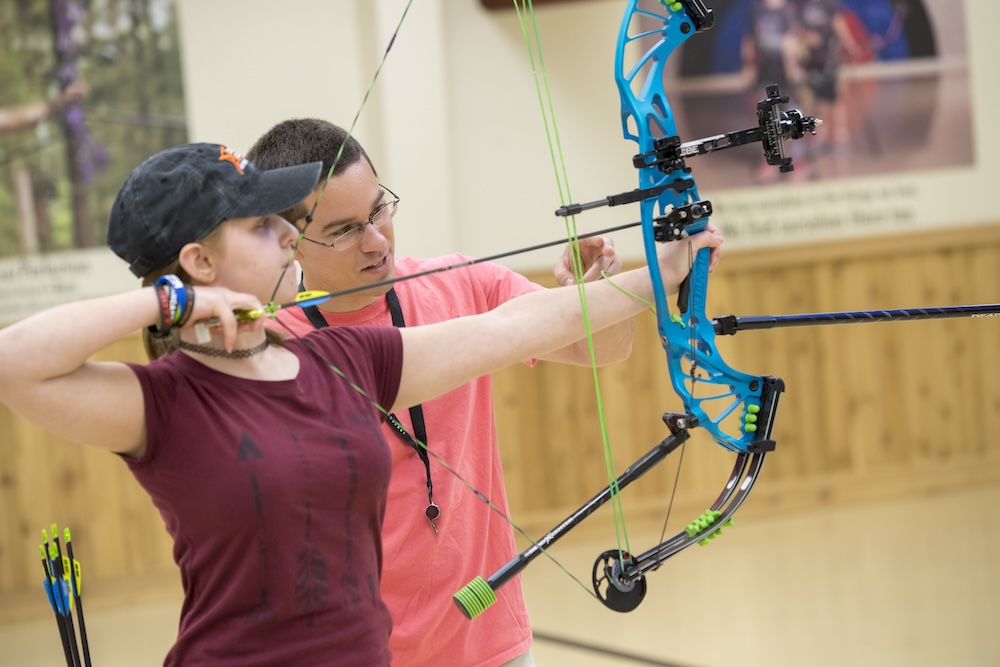
The days are getting longer and the temperatures are rising. Spring brings bears out of dens, chicks out of eggs and bows out of cases. Winter tends to be the season when some archers take the longest period off. While some participate in indoor leagues, others press pause on practice and return when the outdoor season arrives.
Significant time away from any athletic endeavor can bring setbacks. After months off, draw weights may feel heavier and arrows may group farther apart. However, many archers swear by their “muscle memory.” They believe that if they’ve shot enough arrows in the past, their muscles will remember the movement and allow them to quickly regain strength and accuracy.
Muscle memory is a popular term among athletes. Merriam-Webster defines muscle memory as “the ability to repeat a specific muscular movement with improved efficiency and accuracy that is acquired through practice and repetition.”
While repetitive physical movements build muscle and create habits, there’s some debate on how muscle memory works.

Archery is a mental and physical activity. When you’re first developing archery skills, you’re both building muscle and learning to perform a task correctly. Accurate shooting requires learning the proper steps to execute each shot. This includes foot placement, anchor points, grip, correctly drawing back, following through and more. At first, learning these movements requires conscious thought. You must think about your stance, analyze your anchor points and remember to follow through after every shot. However, after enough repetition, archers begin to perform these steps and movements subconsciously.
This is the foundation of forming muscle memory, but it’s not really about the muscles. Being able to take time away from a physical activity and perform it properly in the future requires the activity to be embedded in your brain. You’ve probably heard people say, “It’s like riding a bike.” This common saying isn’t referring to the muscles’ ability to ride the bike; it’s that once you’ve learned the skill, it doesn’t go away.
Some experts refer to this type of muscle memory as “motor memory.” That’s due to the brain remembering the fine motor skills required to perform the activity. Your muscles wouldn’t perform the task without the mind sending the proper signal. But that’s not to say your muscles don’t play a role in motor memory.

Another aspect of muscle memory does directly involve the muscles. Shooting archery builds muscles in your arms, back, chest and shoulders. In the beginning, it can take time to build up these muscles. As with any physical activity, when you stop practicing archery, these muscles lose strength. Recent studies have shown, though, that when you start shooting again following a significant break, you’re not starting from scratch.
According to a study in Frontiers of Physiology, when you first build muscle, your body adds new cells to the muscles. As you lose muscle, these cells don’t disappear. Instead, they stick around and become reactivated once you start training again. This is the muscle memory that allows archers to acquire strength and accuracy quicker than when they first learned.
For example, when you first started archery, you might have started at a low draw weight and worked your way up several pounds. When you put down your bow for a significant amount of time and then pick it back up, you likely won’t return to the draw weight where you first learned. While you may struggle to draw back at first or have to reduce the draw weight by a few pounds, you’ll likely be able to return to your normal draw weight much quicker than you did in the beginning. This is attributed to muscle memory and the body’s ability to adapt to rebuilding muscle it once had.

New archers can gain an edge by developing muscle memory the right way. Muscle memory makes it hard to kick bad habits. Learning proper archery form from the start creates good habits. Many archery shops offer lessons with certified archery coaches. Working with a certified archery coach will ensure you develop proper shooting form and build the right muscles. Once you get to the point of shooting subconsciously, you’ll have accurate muscle memory.
It’s also important to practice with a purpose. Levi Morgan, 16-time IBO world champion archer, says your body subconsciously memorizes every movement. In a video about the importance of muscle memory in archery, he stresses why archers should make every shot count. He advises competitive archers, especially, to go through the steps and focus on proper form as a way to develop muscle memory for competitions. If you can get your body to subconsciously execute the steps perfectly, he says, your body will know how to perform under pressure.
Muscle memory develops over time. Learning to shoot properly and building the right muscles takes practice. And while returning to the range after time off may have you feeling a little rusty, trust that the time you put in in the past will have you in shooting shape sooner rather than later.
The post Myth Buster: Is Muscle Memory Real? appeared first on Archery 360.